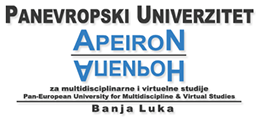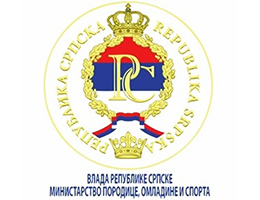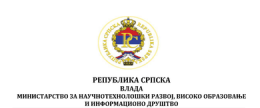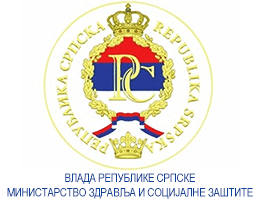The Effects of Adapted Physical Exercise on Gross Motor Function and Motor Abilities in Child With Multiple Disabilities
Volume 14, Issue 2 (2024)
Volume 14, Issue 2 (2024)
The Effects of Adapted Physical Exercise on Gross Motor Function and Motor Abilities in Child With Multiple Disabilities
Apstrakt:
This case study aims to determine the effects of adapted physical exercise on gross motor function and motor
abilities in a child with multiple disabilities. The subject is a 12-year-old boy diagnosed with a multiple disabilities with
limitations identified within physical, mental and sensory integrity. The applied experimental treatment, defined according
to his needs and abilities, consisted of an exercise program implemented for 4 months, twice a week for 45 minutes and is
programmed with the aim of myofascial relaxation, passive stretching, corrective-compensatory effects and the development
of gross motor skills and strength. The instruments used to test the initial and final state are the clinical test for assessing
the gross motor function of children with cerebral palsy “GMFM-Gross motor functional movement measure-88”
and the Eurofit battery test for assessing motor abilities. Variables based on a specific group of GMFM test items indicate
that the gross motor function assessed at the final measurement were improved by 6% compared to the initial measurement.
In the measured variables of the Eurofit battery test, positive changes in the results were achieved in the standing broad
jump, sit and reach, plate tapping, sit ups in 30 seconds, while the result of the bent arm hang test remained unchanged.
The results in this study suggest that the application of the experimental program had a positive effect on the motor abilities
and gross motor function of child with multiple disabilities.
Ključne riječi:
adapted physical exercise, multiple disabilties, cerebral palsy, gross motor function.
Puni tekst:
Reference:
Abdullah, N. M., Akhir, N. H. M., Tumijan, W., Hamid, N. A., Parnabas, V., Nazarudin, M. N., & Fauzee, M. S. O. (2014). The Assessment of
Motor Performance Using Two Coordination Tests on Students with Cerebral Palsy-A Preliminary Study. Media Ilmu Keolahragaan
Indonesia, 4(1).
Bhutia, C. D., Nair, U. S., & Surujlal, J. (2015). Effect of physical exercise programme on gross motor function of children with cerebral palsy:
physical activity and health. African Journal for Physical Health Education, Recreation and Dance, 21(sup-1), 1-13.
Council of Europe, Committee for the Development of Sport (1988). Handbook of EUROFIT tests of physical fitness. Rome: Edigraf Editoriale
Grafica.
Dewar, R., Love, S., & Johnston, L. M. (2015). Exercise interventions improve postural control in children with cerebral palsy: a systematic review.
Developmental Medicine & Child Neurology, 57(6), 504-520. doi: 10.1111/dmcn.12660
Dodd, K. J., Taylor, N. F., & Graham, H. K. (2003). A randomized clinical trial of strength training in young people with cerebral palsy. Developmental
Medicine & Child Neurology, 45(10), 652-657.
Erol, H., Sertel, M., Alpcan, A., & Arslan, M. (2022). The Evaluation of Physical Activity and Physical Fitness Levels in Adolescent Individuals
with Cerebral Palsy. Kırıkkale Üniversitesi Tıp Fakültesi Dergisi, 24(1), 73-82.
Golubović, Š., Maksimović, J., Golubović, B., & Glumbić, N. (2012). Effects of exercise on physical fitness in children with intellectual disability.
Research in developmental disabilities, 33(2), 608-614.
Kwon, J. Y., Chang, H. J., Yi, S. H., Lee, J. Y., Shin, H. Y., & Kim, Y. H. (2015). Effect of hippotherapy on gross motor function in children with
cerebral palsy: a randomized controlled trial. The Journal of Alternative and Complementary Medicine, 21(1), 15-21.
Lee, J. H., Sung, I. Y., & Yoo, J. Y. (2008). Therapeutic effects of strengthening exercise on gait function of cerebral palsy. Disability and Rehabilitation,
30(19): 1439–1444.
Mensch, S. M., Echteld, M. A., Lemmens, R., Oppewal, A., Evenhuis, H. M., & Rameckers, E. A. A. (2019) The relationship between motor abilities
and quality of life in children with severe multiple disabilities. Journal of Intellectual Disability Research, 63: 100–112.
Merino-Andrés, J., García de Mateos-López, A., Damiano, D. L., Sánchez-Sierra, A. (2022) Effect of muscle strength training in children and
adolescents with spastic cerebral palsy: A systematic review and meta-analysis. Clinical rehabilitation; 36(1):4-14.
Milićević, M. (2016). Cerebralna paraliza–Šta nam literatura govori o složenosti ovog stanja. Beogradska defektološka škola, 22(3), 53-71 [in
Serbian]
Page, P., Frank, C. C., & Lardner, R. (2010). Assessment and treatment of muscle imbalance: The Janda approach. Human Kinetics.
Rapaić, D. (2016). Teorijska i praktična razmatranja specijalne edukacije i rehabilitacije. Univerzitet u Beogradu, Fakultet za specijalnu edukaciju
i rehabilitaciju, CIDD. [in Serbian]
Romanov, R. (2020). Koncept invalidnosti i kategorizacija sportista sa invaliditetom. Fakultet za sport i turizam. Educons Univerzitet. Pokrajinski
sekretarijat za sport i omladinu. [in Serbian]
Russell, D. J., Rosenbaum, P.L., Cadman, D.T., Gowland, C., Hardy, S., Jarvis, S. (1989) The Gross Motor Function Measure: a means to evaluate
the effects of physical therapy. Developmental medicine and child neurology. 31, 341-352.
Salapura, S. (2018). Efekti adaptiranog karate programa u tretmanu osoba sa smetnjama u razvoju. Doktorska disertacija, Novi Sad: Univerzitet
Educons [in Serbian]
United Nations Children’s Fund, The world’s nearly 240 million children living with disabilities are being denied basic rights, UNICEF, New York,
2021. Preuzeto sa: https://www.unicef.org/turkiye/en/press-releases/fact-sheet-worlds-nearl...
denied
Winnick, J. P., & Porretta, D. L. (2016). Adapted physical education and sport (6th ed., p. 517). Human Kinetics.






